There are many places of Catholic interest that visitors to the Sept. 22-27 World Meeting of Families and papal events in Philadelphia can visit — as well as participants at the Supreme (national) Convention of the Knights of Columbus that will be in town Aug. 4-6 — if they tire of the crowds at the official events.
Four national shrines are among the following places of devotion in the Philadelphia Archdiocese:
In Philadelphia, there is the Shrine to the Blessed Virgin at the Central Association of the Miraculous Medal in Germantown, the National Shrine to St. John Neumann in Northern Liberties, the National Shrine to St. Rita in South Philadelphia and further afield, the National Shrine to St. Katharine Drexel in Bensalem, the National Shrine to Our Lady of Czestochowa in Doylestown and the Shrine to St. Gianna Molla at Nativity of Our Lord Church, Warminster.
Not to mention the city’s historic churches such as the Cathedral Basilica of SS. Peter and Paul on the Benjamin Franklin Parkway, the Byzantine Ukrainian Catholic Cathedral of the Immaculate Conception on North Franklin Street and our most historic churches, Old St. Joseph and Old St. Mary in Society Hill.
The oldest of the shrines in terms of veneration would be the National Shrine of St. John Neumann at St. Peter the Apostle Church, where the remains of Philadelphia’s fourth bishop may be venerated. Most of Philadelphia’s other bishops are entombed in vaults beneath the Cathedral Basilica of SS. Peter and Paul.
St. John Neumann died in 1860 and it was his request that he be buried beneath St. Peter the Apostle Church because he was a Redemptorist and some of his fellow Redemptorists were already interred there.
Because of his reputation for sanctity his grave became an immediate place of visitation by the faithful.
During the process for his ultimate canonization, his remains were exhumed and since his 1963 beatification have been displayed in a glass reliquary beneath the altar of the shrine. His remains were not incorrupt, but have been skillfully preserved for veneration.
Although only those miracles required for his beatification and his 1977 canonization are officially recognized by the Church, many more have been reported by supplicants who prayed for his intercession to God to assist them.
For more information and schedules for the National Shrine of St. John Neumann see www.stjohnneumann.org
[hotblock]
***
The Miraculous Medal Shrine at the Chapel of the Immaculate Conception in Germantown was established by Vincentian Father Joseph Skelly, whose life work was spreading devotion to the Blessed Virgin and her Immaculate Conception.
The beautiful chapel itself was consecrated in 1879 as part of the adjoining Vincentian Seminary.
It was in 1830 that Sister (now St.) Catherine Laboure, a novice with the Daughters of Charity in Paris, received a vision of the Blessed Virgin who requested the medal be struck. It very quickly became the most widely used religious medal by devout Catholics and remains so. It is a special devotion of the Vincentian family of which the Daughters of Charity are members.
Father Skelly established the Central Association of the Miraculous Medal in 1915 and in 1927 initiated his Monday novenas four times a year. In 1930, the 100th anniversary of Mary’s appearance to St. Catherine, he began the perpetual Monday novenas, which continue to this day. Near the chapel is a small museum that displays artifacts collected by Vincentian missionaries from around the world.
For more information on the Miraculous Medal Shrine see www.cammonline.org
***
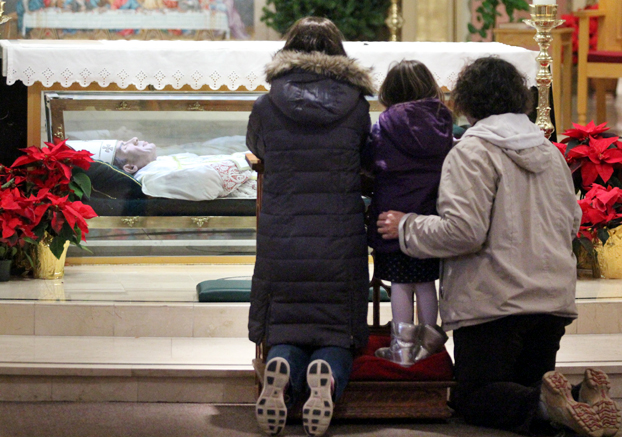
Jennifer Ruppersberger, Tessa Ruppersberger and Carolyn Wise pray before St. John Neumann at his tomb in the shrine dedicated to the saintly former bishop of Philadelphia (Sarah Webb)
St. Katharine Drexel (1858-1955), the Philadelphia heiress who chose vowed poverty and service to the neglected through the foundation of the Sisters of the Blessed Sacrament for Indians and Colored People, built her motherhouse, St. Elizabeth Convent in what is now Bensalem, Bucks County.
It was her intention when she died to be buried in the little convent cemetery alongside the pioneer sisters who joined in her mission. Her congregation thought otherwise. The sisters, along with just about every Catholic in the area, believed she would someday be declared a saint.
While she was living in quiet retirement, no longer involved in the congregation’s work other than by prayer, the sisters petitioned Cardinal Dennis Dougherty for permission to prepare a crypt for her in the lower floor directly under the high altar of the chapel. Cardinal Dougherty, who also had high regard for Mother Katharine, agreed to this with the proviso it could not be directly under the altar but slightly apart, probably because she was not at that time beatified or canonized.
The tomb of St. Katharine is a must stop for anyone visiting the convent. Again, many people attribute miracles, especially miracles of healing, to her intercession.
For more information and schedules for the National Shrine of St. Katharine Drexel see www.katharinedrexel.org
***
The National Shrine of St. Rita of Cascia, located under St. Rita Church on South Broad Street, has been a place of devotion for more than a century, especially through its Wednesday perpetual novena, daily exposition of the Blessed Sacrament and sacrament of reconciliation, with its biggest crowds around the May 22 Feast of St. Rita.
When St. Rita Church was established in 1907, the neighborhood was mixed Irish and Italian but became more predominantly Italian until recent decades, but both ethnic groups had reason to celebrate her.
St. Rita herself was a 15th century Italian wife and mother, who after the tragic deaths of her husband and sons entered an Augustinian cloistered convent and live an extremely holy life. The principal donor toward the construction of St. Rita’s was Irish as were the founding Augustinians friars of the parish.
New York Cardinal John O’Connor, who was born and raised in Southwest Philadelphia, would come to the shrine with his mother, and even in his old age he brought busloads of pilgrims down from New York.
The interior of the shrine was rather nondescript until recent decades, when thanks to farseeing pastors and the work of local artist and sculptor Anthony Visco it was beautifully renovated.
Interestingly while many people come there to pray for physical healing, St. Rita, because of the tragic circumstances of her own life, is also a good intercessor for emotional matters. She is known as a saint for impossible or desperate cases.
See more information and schedules for the National Shrine of St. Rita of Cascia at www.saintritashrine.org
***
The National Shrine of Our Lady of Czestochowa in Doylestown is a special draw for Polish pilgrims and those of Polish descent. It centers on a copy of the famed icon of the Black Madonna which is revered at the Monastery of Jasna Gora in Poland. While the actual origin of the original is unknowable, some traditions place it back to St. Luke and later in the possession of St. Helena and Constantine the Great.
The shrine in Doylestown was established in 1957 under the direction of the Pauline Fathers from Poland. The present building was dedicated in 1966 by Cardinal John Krol and other distinguished visitors have included Presidents Ronald Reagan and Lyndon Johnson.
Cardinal Karol Wojtyla, the future St. Pope John Paul II, visited twice – in 1969 and 1976.
Just as pilgrims often come on foot from distances to the Shrine at Jasna Gora, local foot pilgrimages are sometimes organized for the Doylestown Shrine.
For further information and schedules for the National Shrine of Our Lady of Czestochowa see www.Czestochowa.us
***
The Archdiocesan Shrine to St. Gianna Beretta Molla at Nativity of Our Lord Church in Warminster is the newest and tiniest of the officially recognized shrines in the archdiocese.
St. Gianna (1922-62) was an Italian physician, wife and mother of three. In late 1961, when she was again two months pregnant, it was discovered she had a large fibroma on her uterus. The medical recommendation was either an abortion or a complete hysterectomy, which meant the baby would die. She elected to have the growth removed as much as possible without harming the baby, being fully aware of the serious risk to her own life. Her child Gianna Emanuela was delivered by caesarian section one week before her death.
She was beatified in 1994 and canonized by Pope John Paul II in 2004, with Gianna Emanuela present for the ceremony. St. Gianna and St. John Paul are co-patrons for the World Meeting of Families in Philadelphia.
For more information on the Archdiocesan Shrine of St. Gianna Beretta Molla see www.saintgianna.org
***
Construction of the Cathedral of SS. Peter and Paul on Logan Square in Philadelphia was begun in 1846 by Philadelphia’s third Bishop, Francis Patrick Kenrick. Napoleon LeBrun was the distinguished primary architect, and it was modeled after the Roman church of San Carlo al Corso.
Construction continued under Bishop (St.) John Neumann as funds became available. The holy bishop was an outstanding shepherd but not much of a fundraiser, and in 1857 Bishop James Frederic Wood, a convert and former banker, joined him as coadjutor with right of succession, and Bishop Wood took responsibility to seeing the cathedral built to completion. In 1864 it was sufficiently complete for worship services.
For the past 151 years it has been the seat of Philadelphia’s archbishops, expanded and lovingly improved over time. It was raised to the dignity of a minor basilica in 1976 by Pope Paul VI, after the 41st International Eucharistic Congress that was held in Philadelphia.
For further information and schedules for the Cathedral Basilica of SS. Peter and Paul see www.cathedralphila.org
***
The Ukrainian Catholic Cathedral of the Immaculate Conception in the Northern Liberties section of the city serves Catholics of the Ukrainian Rite and is a beautiful example of Eastern religious architecture. Built in the 1960s, it is inspired by the great Hagia Sophia in Istanbul with a large central dome and lavishly decorated interior with beautiful mosaics and artwork, including a huge mosaic of Pantocrator (Christ the Almighty Ruler).
While Immaculate Conception Cathedral is much smaller than the Cathedral Basilica of SS. Peter and Paul, because it does not have interior columns, it actually has a large seating capacity. One recent addition is the display of a full-sized replica of the Shroud of Turin which many Catholics believe is the burial cloth of Christ.
For further information and schedules for the Ukrainian Cathedral of the Immaculate Conception see www.ukrcathedral.com
***
Old St. Joseph’s and Old St. Mary’s, located within blocks of each other in the Old City section of Philadelphia, were the first Catholic churches in the city.
St. Joseph’s traces back to 1733, when Catholicism was technically banned in the British colonies, and the first tiny chapel, built by Jesuit Father Joseph Greaton, deliberately did not look like a church and was tucked away on what was then a secluded location on Willings Alley. Although some eyebrows were raised, it was left in peace, because William Penn’s Quakers believed in religious tolerance.
Old St. Mary’s was established in 1763 with Father Robert Harding as the first pastor. During the Revolutionary War both George Washington and John Adams attended special services at the church.
When the Diocese of Philadelphia was created in 1808 St. Mary’s became the first cathedral.
Both St. Mary and St. Joseph are radically altered from their beginnings, but the interiors remain beautiful examples of Colonial/Federalist church décor.
***
Any discussion of sacred places in the Philadelphia area has to include one that has no direct religious connection, and that is Independence Hall, the birthplace of America, which from a civic standpoint is a must visit for pilgrims to the city.



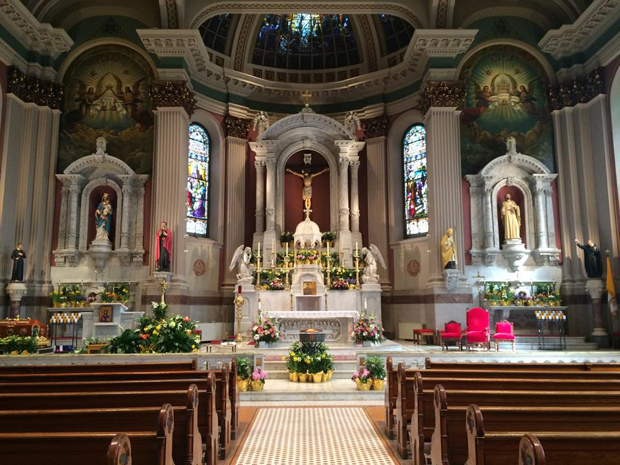
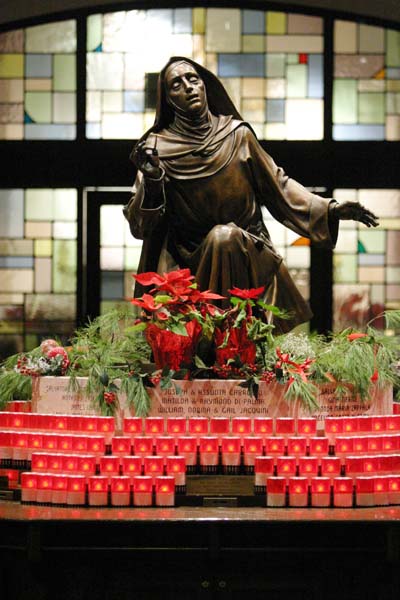
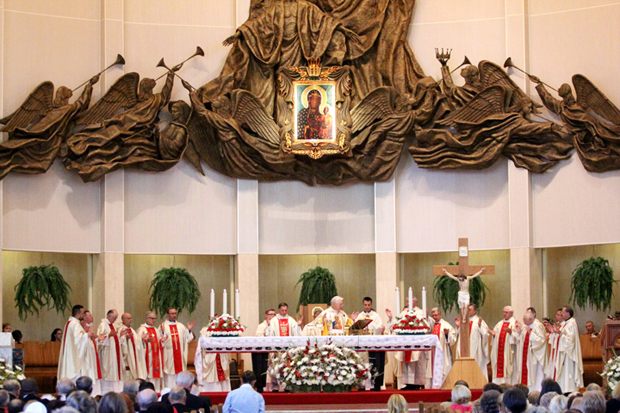
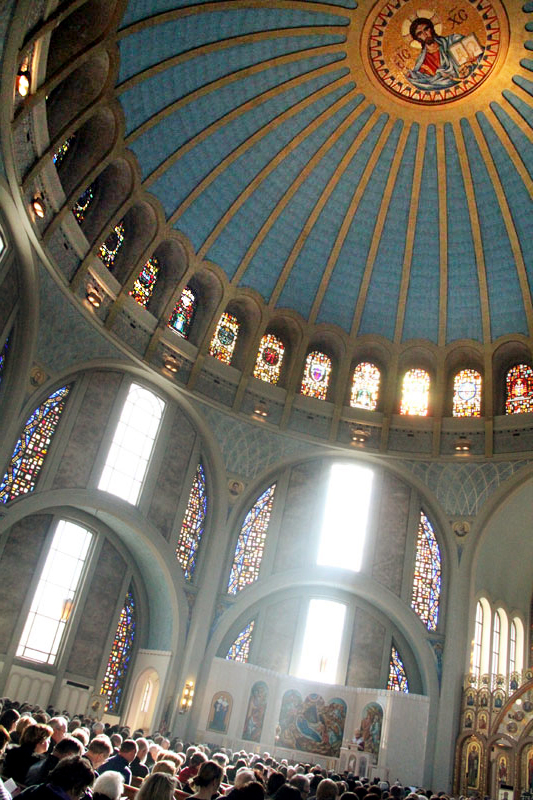
For peace in the world. That all men and women may live as brothers and sisters in social peace and religious unity. To enlighten and guide all the leaders of our world, nation and community. For the Pope, bishops, priests, religious and for all the Catholics of the world. For our family and near and dear ones. For our spiritual and temporal wants. For good health and long life. That we may go to Heaven when we die. For success in work and studies. For a happy married life for my daughter and for a safe pregnancy and for a normal delivery and for a transfer to Bangalore office. For the eternal repose of the souls of our dear departed. Thanksgiving for favours received.
Surprised to see a church as steeped in Philadelphia history as Olde St. Augustine’s Church omitted from this list. So much that makes Philadelphia what it is today stems from events surrounding this grand old church. Events here resulted in the birth of the Philadelphia Police Department, the Philadelphia Orchestra and Villanova University, just to name a few. Wonderful place to celebrate a Saturday evening mass after a day in the historic area as well! http://www.ushistory.org/tour/st-augustine.htm